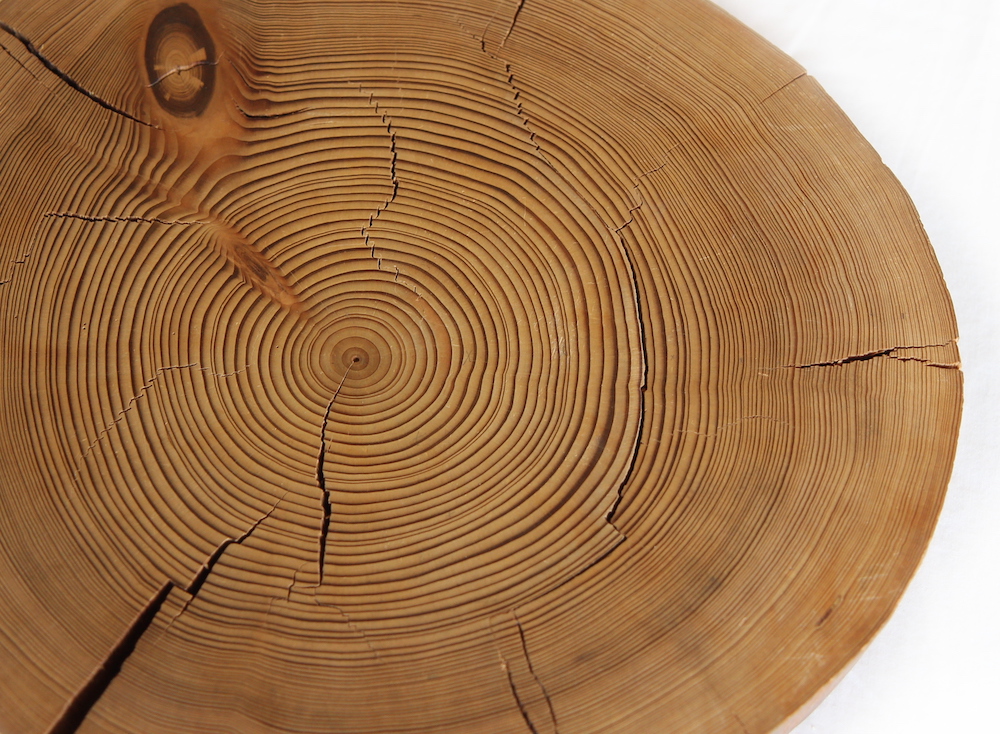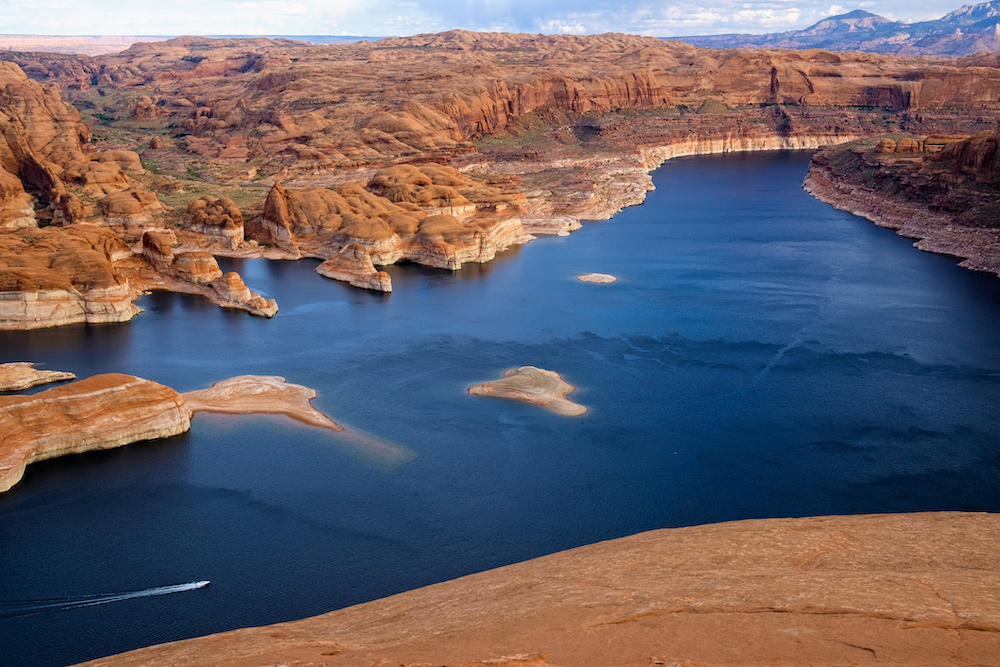Tree Rings Are Evidence of the Megadrought—and Our Doom
I love trees. I also love dendrochronology—literally, “the study of tree time.” This science, which uses data derived from tree growth rings, provides scientists with a wealth of information relating to the conditions under which trees grow.
As a graduate student, I was interested in the now-famous method of dating archaeological sites through tree-ring analysis. Later I became interested in the application of tree-ring interpretation to the dating of musical instruments.
Recently, with the increasing intensity of anthropogenic climate change, the topic garnering more of my attention is dendroclimatology. This fascinating science uses tree rings to reconstruct ancient precipitation, temperature, and other climatic variables. Unlike various instruments for tracking weather, tree rings provide researchers with a record going back hundreds or even thousands of years.
That is why tree rings make me nervous: The long-term picture these markers paint about megadroughts and climate change in the western U.S., where I live, is deeply troubling.
The Dawn of A modern Megadrought
Covering an area that includes the Four Corners states (Arizona, Colorado, New Mexico, and Utah), the lower reaches of Nevada, southern California, and a large swath across northern Mexico, the North American Southwest is famous for its arid climate. Over the last 22 years, the region has suffered from severe drought. That period meets the criteria of a “megadrought,” and it has been remarkable for both its duration and intensity.
For those of us who worry about anthropogenic climate change, two questions come to the fore: How anomalous is the current megadrought compared to previous megadroughts? And what is the likelihood that these conditions will persist into the future?
Instrument-based precipitation and temperature records in the U.S. Southwest date back only to the late 1800s. For decades, the number of instruments was small, and they were widely dispersed across a vast area. The data they provide is therefore not very good for evaluating climate variability across space and through time. Tree-ring data, on the other hand, is highly useful for this kind of big-picture analysis.
Conceptually, dendroclimatology in the western U.S. is simple. Given the region’s natural aridity, it makes sense that a lack of precipitation can limit tree growth. As such, a dry year will cause many trees to produce a narrow growth ring, whereas a wet year will lead to a wide growth ring. (In other parts of the world, such as at high elevation and near the Artic and Antarctic, trees respond to temperature fluctuations more than they do to shifts in precipitation. In these places, cold years generate narrow rings, and warm years give rise to wide rings.)
In practice, however, dendroclimatology can be astonishingly difficult, requiring rigorous fieldwork and sampling strategies, detailed sample preparation and analysis techniques, and complex mathematical modeling. All that is for the specialists. But regular folk can still learn from their research.
In a 2022 paper published in Nature Climate Change, A. Park Williams, of the University of California, Los Angeles, and his colleagues applied tree-ring analysis to building a mathematical model of soil moisture levels dating back to A.D. 800 across the North American Southwest. Their study reveals that the 22-year period from 2000 through 2021, our current megadrought, was the driest and hottest period in the last 1,200 years.
Tree rings indicate there was another 22-year megadrought from 1571 to 1592 that was nearly as dry but not as hot as the current conditions. Anthropogenic climate change makes the deleterious effects of today’s megadrought that much worse, for it is significantly hotter now than it was in the late 16th century. Indeed, Park and colleagues suggest the current megadrought would be only about 60 percent as severe in the absence of anthropogenic climate change.
That makes a huge difference when it comes to soil moisture and sustainability.
A Troubling Twist of Fate
A related paper published this year used tree-ring analysis to examine the history of the Colorado River, which provides water for tens of millions of people in Las Vegas, Nevada; Los Angeles, California; Phoenix, Arizona; and hundreds of smaller communities. Researchers from the University of Arizona focused on dendrohydrology, the science of using tree rings to reconstruct ancient hydrological variables like stream flow.
They analyzed previous publications that used tree rings to reconstruct Colorado River stream flow at Lees Ferry, Arizona, one of the main measurement stations on the Colorado River. Their review confirmed that the conclusions from prior research about water supply and demand on the river were reliable and up to modern standards. That is good news for the scientific method, which often requires independent confirmation. It is bad news for users of water from the Colorado River Basin.
Politics may supersede nature in the short run, but Mother Nature will rule in the long run.
It’s important to note that nearly 100 years ago, on November 24, 1922, delegates from seven U.S. states gathered in Santa Fe, New Mexico, to sign the Colorado River Compact—and inadvertently set the region up for failure.
The delegates believed the average Colorado River stream flow was 16.5 million acre-feet per year. So, their agreement apportioned 7.5 million acre-feet of water annually to provide for growing cities, industrial applications, and irrigation for farming in what they hoped would be a sustainable way. This would allow the remaining 9 million acre-feet per year to maintain the Colorado River ecosystem. Or so they thought.
The instrumental stream-flow data they employed to inform the compact came from a 22-year period between 1900 and 1921. In an almost unbelievable twist of fate, the Colorado River enjoyed a significantly higher stream flow during that 22-year period than at any other period in the last 500 years! We now know this through tree-ring analyses.
Compact signatories therefore legally bound themselves to unrealistically large allocations because their input data, unbeknownst to them and by sheer chance, came from an anomalously wet period in the climatic history of the U.S. Southwest. People in the region have been dealing with the consequences of this ever since.
It seems highly unlikely that the compact will be renegotiated given the current political climate. Politics may supersede nature in the short run, but Mother Nature will rule in the long run.
To summarize, tree-ring analysis demonstrates that: (1) the megadrought puts the U.S. Southwest in unprecedented and uncharted climatological territory, and (2) the allocation of the area’s largest and most important water source was based on data from an unusually wet period and therefore would be insufficient to supply this now-booming region even if it weren’t in a megadrought. You simply cannot make this stuff up.
Beyond the Shadow of a Drought
Popular media regularly publish stories on new and drastic water conservation measures being implemented in major metropolitan areas such as Phoenix, Las Vegas, and Los Angeles. They report on the unprecedentedly low water levels in Lake Mead and Lake Powell, two artificial reservoirs in Arizona, Nevada, and Utah that store water for the area. Both are now at roughly 30 percent capacity, their lowest levels since being filled decades ago.
This threatens water and hydropower supplies, and thus livelihoods, across the region. Severe conservation measures are being carried out, but they seem to be too little, too late.
Although tree-ring data allow us to peer into the past, they do not help us predict the future. We simply have no way of knowing if the current megadrought will end next year, or if it will continue for decades. I am not optimistic.
Robert Fulghum, author of All I Really Need to Know I Learned in Kindergarten, wrote about the challenges of making choices when we simultaneously know too much and not enough: “Too much high-content information, and I get the existential willies.” Based on the high-content data from tree rings, I have the existential willies.



























